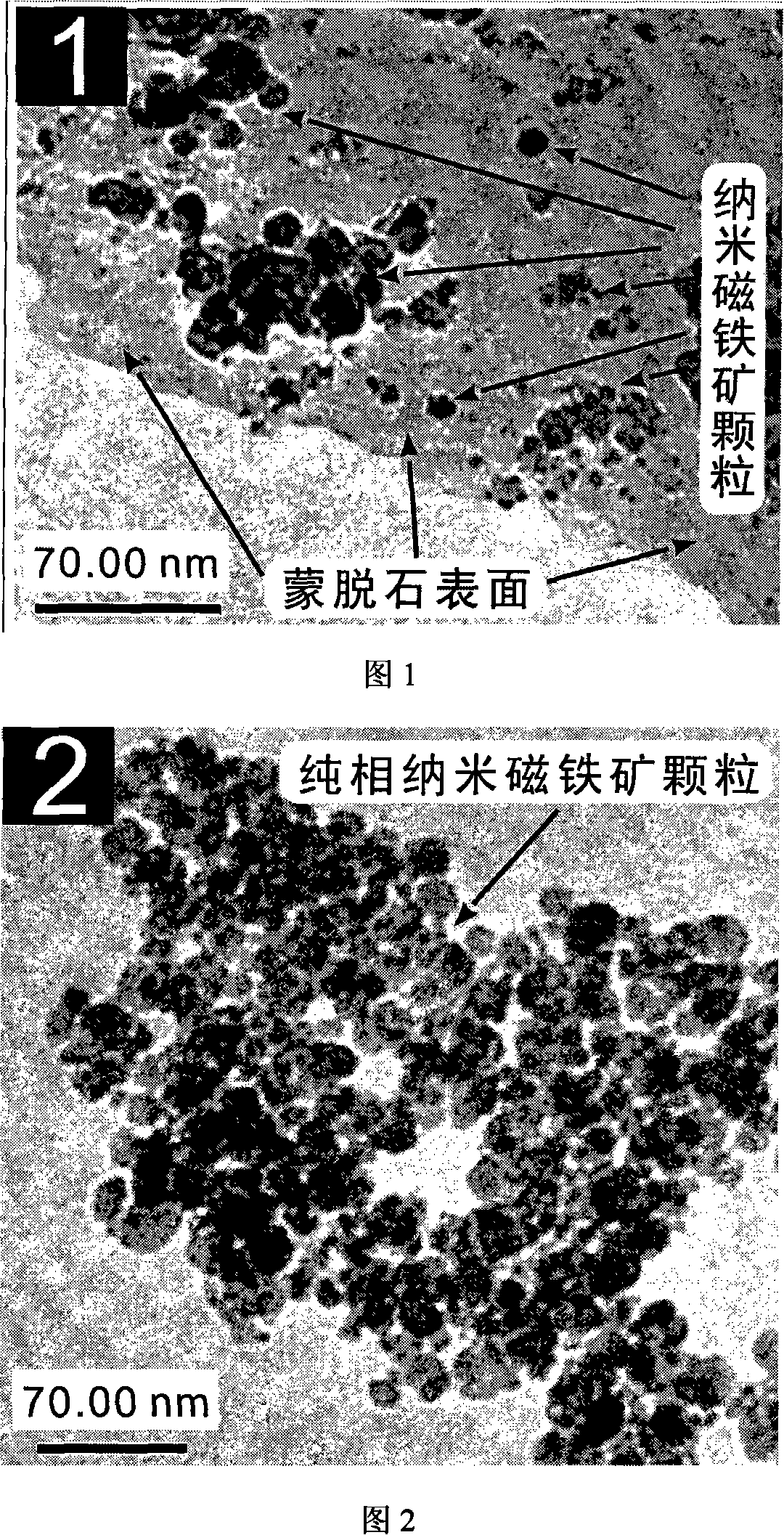Method for treating Cr6+ in waste water and method for preparing montmorillonite-base nano magnetite used thereof
A montmorillonite-based, nano-magnet technology, applied in water/sewage treatment, adsorption water/sewage treatment, water/sludge/sewage treatment, etc., can solve problems such as secondary pollution and inability to restore hexavalent chromium, and achieve The effect of easy recovery, strong adsorption, and large specific surface area
- Summary
- Abstract
- Description
- Claims
- Application Information
AI Technical Summary
Problems solved by technology
Method used
Image
Examples
Embodiment 1
[0021] Example 1: Preparation of montmorillonite-based nano-magnetite adsorption material
[0022] 1) Weigh 170g FeCl 3 ·6H 2 O with 122gFeCl 2 4H 2 O, placed in a reactor filled with 5L of distilled water, stirred to dissolve.
[0023] 2) Heat the suspension to 60°C and keep it warm; under continuous stirring conditions, slowly add ammonia solution with a concentration of 10% (mass percentage) into the suspension, and stop dripping when the pH value of the suspension reaches 9. Add, continue to keep warm, stir for 2 hours.
[0024] 3) Centrifuging the suspension, and centrifuging and rinsing the magnetite wet precipitate with distilled water for 6 times, so that the pH value of the centrifuged supernatant is neutral. Then, 3 L of 0.01 mol / L hydrochloric acid was added to the obtained magnetite wet precipitate, fully stirred to disperse it evenly, and then the precipitate was centrifuged.
[0025] 4) Add 2 L of distilled water to the separated precipitate and stir thorou...
Embodiment 2
[0030] Potassium dichromate (K 2 Cr 2 o 7 ) for Cr 6+ source, formulated Cr 6+300ml of simulated wastewater with a concentration of 200mg / L and a pH value of 3.0. Weigh 36.6 g of the montmorillonite-based nano-magnetite adsorption material prepared in Example 1, add it to the prepared wastewater, stir for 5 minutes, and let stand for 15 minutes. Then use a common circular magnet with a diameter of 16cm to absorb the precipitate to achieve solid-liquid separation. After testing, the pH of the treated water is neutral, where Cr 6+ The concentration is lower than 0.01mg / L, which meets the discharge standard.
Embodiment 3
[0032] Potassium dichromate (K 2 Cr 2 o 7 ) for Cr 6+ source, formulated Cr 6+ 600ml of simulated wastewater with a concentration of 100mg / L and a pH value of 6.0. Weigh 68.2 g of the montmorillonite-based nano-magnetite adsorption material prepared in Example 1, add it into the prepared wastewater, stir for 5 minutes, and let stand for 15 minutes. Then use a common circular magnet with a diameter of 16cm to absorb the precipitate to achieve solid-liquid separation. After testing, the pH of the treated water is neutral, where Cr 6+ The concentration is lower than 0.01mg / L, which meets the discharge standard.
PUM
| Property | Measurement | Unit |
|---|---|---|
| Specific surface area | aaaaa | aaaaa |
| Particle size | aaaaa | aaaaa |
| Diameter | aaaaa | aaaaa |
Abstract
Description
Claims
Application Information
 Login to View More
Login to View More - R&D
- Intellectual Property
- Life Sciences
- Materials
- Tech Scout
- Unparalleled Data Quality
- Higher Quality Content
- 60% Fewer Hallucinations
Browse by: Latest US Patents, China's latest patents, Technical Efficacy Thesaurus, Application Domain, Technology Topic, Popular Technical Reports.
© 2025 PatSnap. All rights reserved.Legal|Privacy policy|Modern Slavery Act Transparency Statement|Sitemap|About US| Contact US: help@patsnap.com

